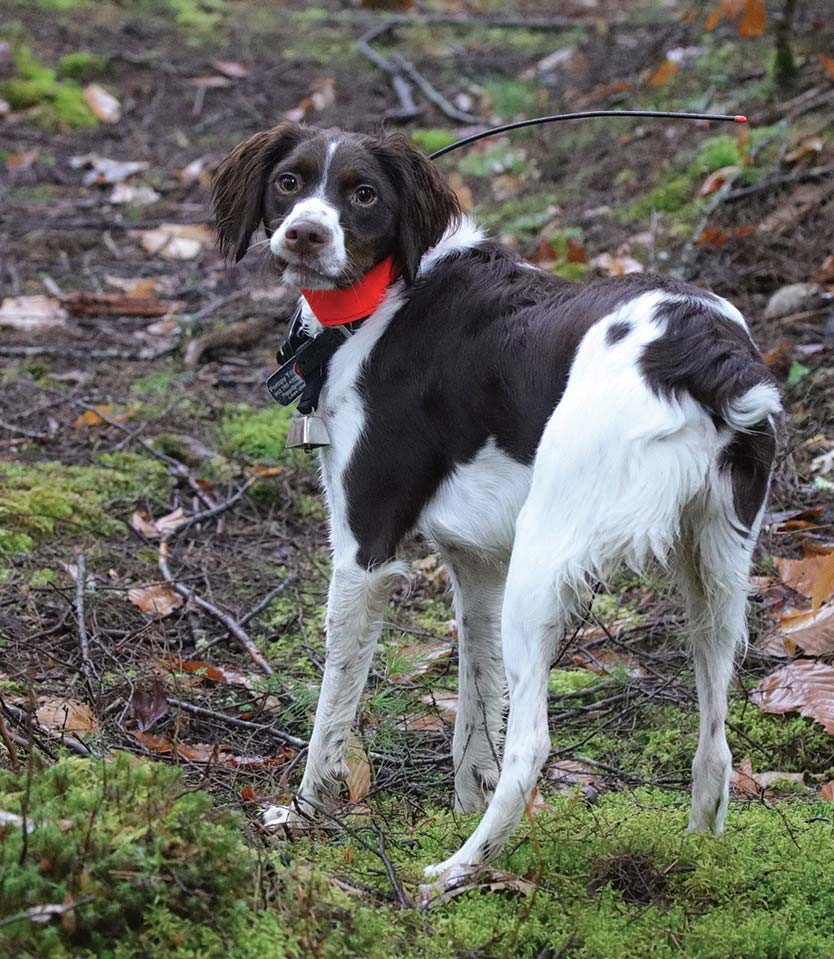I’ve been spending many weekend hours up on our hill, cutting down stands of invasive honeysuckle. I use a hand saw and work slowly, stopping every time I hear the approaching chime of a dog bell. Pompy, my 2-year-old Brittany, investigates everything in the woods that moves, smells, or makes sound. In the presence of such sensory riches, she seems puzzled why I stay in one small area, fussing with shrubs. A few sniffs of the saw and she’s off again, perhaps to find a sequel to her autumn 2020 yellow-jacket-nest-in-a-chipmunk-hole excavation project.
The Tillinghast war with invasive plants is, at best, one of attrition, but my husband Tig and I have made progress in areas where there’ll be an ash harvest later this season. By knocking back honeysuckle, we hope to give tree seedlings and other native plants a better chance to fill the new clearings. Tops and branches of logged trees, left where they fall, may help (a little) to shield the plants from the neighborhood deer horde. This slash will also enrich habitat for a variety of wildlife, including birds, rodents, and stinging insects that inspire humans to yell, “Pompy, no!” then run toward the house while shouting and slapping frantically at their arms and backsides.
This issue of Northern Woodlands – like the ones before it – is stocked with diverse forest topics, including those that loom large in my own autumn plans: invasive plant suppression, preparations for emerald ash borer (EAB), and the addition of woody debris to the forest floor, what our new columnist Ethan Tapper describes as part of the “messiness” that promotes forest health.
As we continue to explore these and other issues, I’m mindful of the trade-offs embedded in most forest management decisions; there’s rarely one, absolute right way of doing things. Leave tops and branches on the ground, or use this wood as a substitute for fossil fuel? Harvest ash or let it stand and hope against hope that there’s an EAB-resistant tree? Even our family invasives work involves an ongoing reckoning: how many weekend hours can Tig and I dedicate to cutting, and when and where are we willing to use glyphosate?
It’s messy out there on all levels, from policy choices to on-the-ground practicalities. But as my canine companion often reminds me, complexity is what makes forests so fascinating. Our woods are rich and varied and changing all the time, and we’ll never know all there is to know about them. The best we can do is to keep exploring. And when a chipmunk hole starts buzzing, run.


